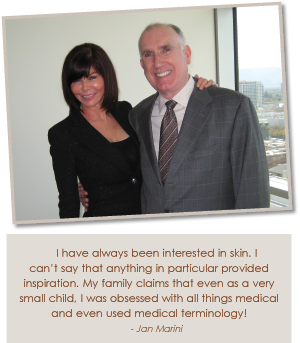The legal difference between a cosmetic and a drug is determined by a product's intended use. Different laws and regulations apply to each type of product. Manufacturers sometimes violate the law by marketing a cosmetic with a drug claim or by marketing a drug as if it were a cosmetic, without adhering to requirements for drugs.
How does the law define a cosmetic?
The FD&C Act defines cosmetics by their intended use, as "articles intended to be rubbed, poured, sprinkled, or sprayed on, introduced into, or otherwise applied to the human body...for cleansing, beautifying, promoting attractiveness, or altering the appearance". Among the products included in this definition are skin moisturizers, perfumes, lipsticks, fingernail polishes, eye and facial make-up preparations, shampoos, etc., as well as any material intended for use as a component of a cosmetic product.
How does the law define a drug?
The FD&C Act defines drugs by their intended use, as "(A) articles intended for use in the diagnosis, cure, mitigation, treatment, or prevention of disease, and (B) articles (other than food) intended to affect the structure or any function of the body of man or other animals".
How can a product be both a cosmetic and a drug?
Some products meet the definitions of both cosmetics and drugs. This may happen when a product has two intended uses. For example, a shampoo is a cosmetic because its intended use is to cleanse the hair. An anti-dandruff treatment is a drug because its intended use is to treat dandruff. Consequently, an anti-dandruff shampoo is both a cosmetic and a drug. Among other cosmetic/drug combinations are toothpastes that contain fluoride, deodorants that are also anti-perspirants, and moisturizers and make-up marketed with sun-protection claims. Such products must comply with the requirements for both cosmetics and drugs, as well as the labeling protocols.
What about "Cosmeceuticals"?
The FD&C Act does not recognize any such category as "cosmeceuticals." A product can be a drug, a cosmetic, or a combination of both, but the term "cosmeceutical" has no meaning under the law. This doesn’t mean the term is not tossed about blatantly in our industry. (I must raise my hand for past transgressions, but never again…)
How are the laws and regulations different for cosmetics and drugs?
The following information is not a complete treatment of cosmetic or drug laws and regulations. It is intended only to alert you to some important differences between the laws and regulations for cosmetics and drugs in the areas of approval, good manufacturing practice, registration, and labeling.
How approval requirements are different: The FDA does not have a pre-market approval system for cosmetic products or ingredients, with the important exception of color additives. Drugs, however, are subject to FDA approval. Generally, drugs must either receive pre-market approval by FDA or conform to final regulations specifying conditions whereby they are generally recognized as safe and effective, and not misbranded.
A Note on "New Drugs"
Despite the word "new," a "new drug" may have been in use for many years. If a product is intended for use as a drug, no matter how ancient or "traditional" its use may be, once the agency has made a final determination on the status of an OTC drug product it must comply with the appropriate OTC monograph to be marketed legally in interstate commerce.
How good manufacturing practice requirements are different: Good manufacturing practice (GMP) is an important factor in assuring that your cosmetic products are neither adulterated, nor misbranded. However, no regulations set forth specific GMP requirements for cosmetics. In contrast, the law requires strict adherence to GMP requirements for drugs, and there are regulations specifying minimum current GMP requirements for drugs.
How labeling requirements are different: A cosmetic product must be labeled according to cosmetic labeling regulations. OTC drugs must be labeled according to OTC drug regulations, including the "Drug Facts" labeling. Combination OTC drug/cosmetic products must have combination OTC drug/cosmetic labeling. For example, the drug ingredients must be listed alphabetically as "Active Ingredients," followed by cosmetic ingredients, listed in order of predominance as "Inactive Ingredients."
Understanding Label Claims
Two types of claims can be made for product performance: drug claims and cosmetic claims. Drug claims are those claims which state that the product alters the physiology or function of any part of the human body. Cosmetic claims do not describe any physiological effect on the body.
For example, "reduces perspiration" is a drug claim for anti-perspirant because it states that the product will alter the natural perspiration process. "Dries quickly" is a cosmetic claim because it describes the product but does not indicate any physiological effect on the human body.
A sunscreen might be marketed as a product that "prevents erythema caused by the sun (sunburn)." That is a drug claim. "Unfragranced," however, is a cosmetic claim.
These examples show a clear division between drug claims and cosmetic claims. Actually, however, there is a gray area where drug claims and cosmetic claims may overlap. That is why the FDA monitors product claims to determine whether any given claim is a drug claim or a cosmetic claim.
In recent years, the overlap between drug claims and cosmetic claims has become more problematic. Basic research has discovered previously unknown physiological effects of accepted cosmetic ingredients, and cosmetic companies have become more aggressive in developing a “cosmetic/drug blended approach” (before this research I would have used “cosmeceutical approach” here, but I remain true to my earlier vow) to marketing.
Many cosmetic ingredients can in fact result in temporary changes in the structure and function of the skin. Claims for these changes might be considered drug claims by definition. However, because these changes result from application of accepted cosmetic ingredients used in an ordinary cosmetic situation, they should logically be considered cosmetic claims.
Drug Claims
A company can make a drug claim only after the FDA approves the claim. The FDA has the authority to force a company to remove its product from the store shelves if any drug claim is made about the product without prior agency approval. Or, when consumer safety is at risk, the FDA itself can seize the product.
There are two general categories for FDA drug claim approval. The first applies to all products within a given class of over-the-counter products. The FDA issues a monograph on the class, and OTC products can be marketed with drug claims that adhere to the restrictions set forth in the monograph.
The second category for FDA drug claim approval is for claims which do not fall within an approved OTC monograph. These are approved (or not approved) only after an extensive review by the FDA. If a company wishes to make a drug claim for a product beyond the claims approved in the monograph for that product category, then it must submit an Investigative New Drug application. After an exhaustive clinical study, the FDA will review the claim and determine whether it is approved for marketing purposes.
Cosmetic Claims
Cosmetic claims are reviewed by the National Advertising Division of the Council of Better Business Bureaus. The NAD reviews questionable claims reported by consumers and by companies in competition with the company making the questionable claim. On occasion, the NAD may review unreported claims that the agency itself views as questionable. In 1993, it reviewed 12 cases; in 1994, it reviewed 19.
NAD's task is to determine if advertising claims are substantiated by data submitted by the company to support those claims. NAD will make one of three determinations: either the claim is substantiated, or it must be modified based on available scientific information, or advertising based on the claim must be discontinued because the claim is unsubstantiated.
For example, in August 1994, NAD recommended that one company discontinue its claim, "beautiful skin in four days." The claim was unsubstantiated because the company could not supply data supporting the claim. When challenged, some companies will willingly discontinue questionable claims. If a company disagrees with a NAD decision, however, it can appeal to the National Advertising Review Board.
Superiority claims are a source of difficulty. This difficulty arises when two or more cosmetic products each claim superiority in the same performance attribute. For example, one skin cleanser says it is milder than a second, while the second claims to be milder than the first. NAD may allow both claims, but only if the competing companies can each supply scientific data supporting their mildness claims.
Suppose the first company conducted a clinical study in which subjects were asked to evaluate mildness. As a group, the subjects responded that the first product was milder because they experienced less dryness. In a separate clinical study conducted by the second company, its product was found to induce less irritation than the first product. In this case, both the competing claims are correct, both are supportable and both would likely be allowed by NAD.
There are some exceptions on cosmetic claims. If the ingredient is only registered as an OTC it may not be included in inactive (cosmetic) ingredients. There are many ingredients that are only allowed as active ingredients and must be labeled as such. An example is Chlorhexidine digluconate which is a solutionthat has been used as a topical antiseptic and disinfectant effective against a wide range of bacteria, some fungi, and some viruses. Meck index cites a number of articles relating to control of gingivitis, etc. It has been used as an antibacterial agent in commercial ophthalmic products as a replacement for thimerosal (which is a mercury-containing bacteriostat). However, due to skin sensitivity, it has been replaced in ophthalmic preparations by methyl p-hydroxybenzoate ("methyl paraben") or other paraben esters. Its use as a dental disinfectant has led to discoloration of teeth and gums. (Source: Sigmaaldrich.com). This ingredient should be listed as an active ingredient according to the FDA as its monograph is for OTC purposes.
Conclusion
Now, if that wasn’t confusing enough for you, there is a five paragraph dissertation on the definition of “soap” I could’ve included. I decided, in a weak moment, to spare you the gory details.
So, how does all this affect you and the products you use and sell? It doesn’t, unless you have a laboratory at home, and even then you’d need a staff of lawyers to translate the laws and regulations, and to inevitably find you a loophole when needed.
The bottom line is this: We are quite well protected by a gaggle of strictly enforced rules and regulations, although a few gray areas do exist. Unless a manufacturer is blatantly lacking in integrity and disrespectful of the law, you may rest assured that you can continue to use and sell the products in your back bar and on your shelves. And, you may do so with the integrity and good faith that they will help your clients achieve their goals, with no downside or harm as a result.
Ameann DeJohn is an active consultant and educator to top salons, spas and skin care manufacturers across the United States. DeJohn is a former spa owner and a licensed aesthetician with more than 17 years experience in the beauty industry. She has been featured on all major networks, lectures at trade conferences and continues to write for industry publications. For more information, please email her at This email address is being protected from spambots. You need JavaScript enabled to view it..






 Those who know Jan Marini refer to her as a visionary. While Jan might agree in principle, she sees this characterization as both a strength and a weakness. She envies those who are able to savor the moment. Where others view life in snapshots that capture real time, Jan sees broad borderless landscapes and endless possibilities. She does not see a product, she sees a business and in that same instance her mind is flooded with the business plan and all the accompanying details. Even when she is not envisioning empires, she is never satisfied with the status quo.
Those who know Jan Marini refer to her as a visionary. While Jan might agree in principle, she sees this characterization as both a strength and a weakness. She envies those who are able to savor the moment. Where others view life in snapshots that capture real time, Jan sees broad borderless landscapes and endless possibilities. She does not see a product, she sees a business and in that same instance her mind is flooded with the business plan and all the accompanying details. Even when she is not envisioning empires, she is never satisfied with the status quo.